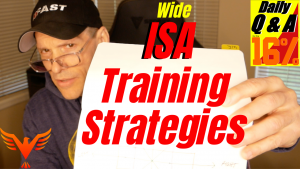A deep, philosophical question for a Monday. This one will take 2 cups of @neurocoffee. From Eduard: the model of inhalation and exhalation works and it is to your credit to show simple solutions to put a human body into positions to facilitate the desired outcome and to restore normal breathing mechanics and movement options. But […]
infrasternal angle
Q & A for The 16% – Young Athlete Development and ISA Compensations & Strategies
My @neurocoffee is in hand and here’s this morning’s Q&A with a little bit of long-term athletic development feel to it. From Nate: I work do a lot of work with athletes in the age groups of 11-25 and I was curious if you think ISA compensations take time to manifest and therefore hard to […]
Q & A for The 16% – Training for Compressive Strategies in a Wide ISA Client
I have my @neurocoffee and I have a great Q & A for today with visual aids included. From Jimmy: I was wondering if you could go into a bit more detail about wide ISAs that show a swayback/posterior tilt, where would you start with someone like this? Following on from this, would that change […]
Q & A for The 16% – Range of Motion Interpretation Mistakes
I get a lot of questions as to how I interpret table tests, and how I relate the results of them to representations of the archetypes, symmetry or asymmetry, and what interventions are best. Your chessboard (the compilation of all your table measures) produces a 4D representation of your client in space. This guides your […]
Q & A for The 16% – Overcoming the Limitation of Your Model of Movement
I’ve my @neurocoffee, hope you have yours. Here’s today’s Q & A. From Carmine: I appreciate the content you’ve continued to put out during these times. I have a question in regard to your model. George Box said “All models are wrong, some are useful.” What would you say are the limitations of your model? […]




